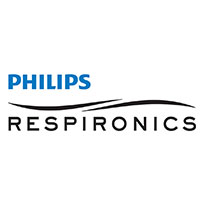Philips Global Sleep Survey Reveals Low Sleep Satisfaction, Misconceptions About Sleep Apnea
Only 36 percent of sleep apnea patients reported using CPAP therapy at least once a week, demonstrating the gap between diagnosis and treatment.
- By Haley Samsel
- Mar 05, 2020
 Ahead of World Sleep Day on March 13, a new report from Philips finds that misconceptions about obstructive sleep apnea (OSA) remain prevalent while sleep satisfaction around the world continues to be low.
Ahead of World Sleep Day on March 13, a new report from Philips finds that misconceptions about obstructive sleep apnea (OSA) remain prevalent while sleep satisfaction around the world continues to be low.
The survey of 13,000 adults in 13 countries, titled “Wake Up Call: Global Sleep Satisfaction Trends,” discovered that only 49 percent of people reported being satisfied with their sleep. A third of those adults said worry/stress was the most limiting factor in getting a good night’s sleep. Researchers were also struck by the finding that fewer adults in 2020 reported taking action to improve their sleep in comparison to 2019.
“The decrease in people taking action to improve sleep is alarming, especially when it is clear people around the world deeply value sleep,” Dr. Mark Aloia, the Global Lead of Health Behavior Change at Philips Sleep and Respiratory Care, said. “Sleep deficit impacts people both mentally and physically, so we need to educate people on available sleep resources and empower them with the confidence that their efforts will pay off.”
Perhaps most concerning to healthcare and HME providers is the study’s findings about sleep apnea. Thirty percent of people with sleep apnea said they believe it is not necessary to treat OSA, and only 36 percent of sleep apnea patients reported using CPAP therapy at least once a week.
Despite affecting approximately 1 billion people worldwide, sleep apnea is not well understood by the general population, according to the survey’s findings. Survey participants reflected widespread misconceptions about sleep apnea: Only 47 percent recognized being overweight/obese as a risk factor for OSA, and only 25 percent believe that anyone can get OSA.
“This year’s survey showed both the promising and somewhat concerning sides of the OSA coin,” David White, the chief scientific officer at Philips Sleep and Respiratory Care, wrote in the report.
White highlighted one recent report finding that approximately two-thirds of OSA patients recognize they have the condition. But a high number believe their OSA does not need treatment, and nearly 50 percent say they’ve never been prescribed CPAP, he wrote.
“This is obviously concerning,” White wrote. “Most patients adjust to CPAP relatively easily, and for those opposed or not tolerant to it in the past, there are other effective treatments such as devices that help patients avoid sleeping on their back. In order to improve quality of life, OSA patients need to recognize that acceptable, effective therapies are available.”
Of the survey participants who have been diagnosed with sleep apnea and use CPAP therapy, 75 percent said they would recommend it to others and 71 percent said the benefits outweigh the inconvenience. More data on barriers to sleep and sleep satisfaction can be found in the full Global Sleep Survey.
About the Author
Haley Samsel is the Associate Content Editor of HME Business and Mobility Management.